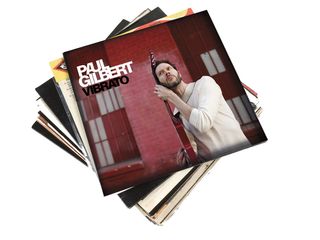
Paul Gilbert talks Vibrato track-by-track
On 15 October, Paul Gilbert will release Vibrato, a wildly entertaining, surprisingly diverse (and wholly cohesive) collection of instrumentals and vocal-based songs that sees the guitar superstar artfully mix blazing rock, delicious funk, stone-cold blues, righteous gospel and shades of jazz into what just might be the artistic triumph of his storied career. (Note: Vibrato was released on 19 September in Japan.)
For the eight studio tracks, Gilbert assembled an ace band that included his wife, Emi, on keyboards, bassist Kelley LeMieux and drum star Thomas Lang. Three live tracks from Gilbert's 2010 Fuzz tour, covers of Yes' Roundabout, Muddy Waters' I Want To Be Loved and AC/DC's Go Down, see the six-string virtuoso throwing it down with Tony Spinner (guitar, vocals), Craig Martini (bass, vocals) and Jeff Bowders (drums).
Gilbert sat down with MusicRadar to discusses the writing and recording of Vibrato, and on the following pages, he goes in-depth, walking us through the album track-by-track.
What was your agenda in making the record? What did you want it to say that was different from other albums of yours?
“I didn’t have any single large goal making Vibrato, but I had about 25 small ones. Some involved specific sounds, like using an octave pedal or my newly discovered stereo Phase 90 trick. I also wanted to use some of the new chords that I had been working on recently. After 35 years of bone-crushing rock guitar playing, I’m finally starting to get my head out of the harmonic sand and learning how to play over chord changes.
“One of my biggest inspirations came from a quick e-mail exchange with Neal Morse. I mentioned to him that I was getting ready to make a new album and that I was dreading the writing process. In the past, that has always been my least favorite part – I love to play, I love to record. Writing is a chore.
“Neal wrote back and said something like, ‘Writing is my favorite part of the process! I don’t have to worry about playing everything perfectly, and I can just enjoy sketching out new music and ideas.’ Just knowing that one person can enjoy the writing process inspired me a lot. I decided to enjoy it, too. It was a forceful decision, and it worked. I had a really good time.”
Lyrically, there’s a lot of sides to the record, but the spiritual message in Atmosphere On The Moon is striking. Are you a spiritual guy – it seems to have come out in the song.
“In my daily life, I tend to be very literal and unsuperstitious. But music gives me an outlet to be very emotional. I’m very careful with the word ‘spiritual’ because I think it’s often used so loosely that no one knows what anyone means, and alarms start going off in my literal brain. But if being ‘spiritual’ is like being ‘emotional’ but cranked up to 11, then yes, music takes me there all the time.
“Every rock face that I make is connected to those wonderful emotions. Also, I love the contrast in the song between being extremely sincere and cynical at the same time. In the lyrics, I sincerely say, “Ask all the children” to study science in order to install a breathable atmosphere on the moon, so I can get my cantankerous self up there and get away from all the annoying, crazy and violent people on earth.
“Singing this misanthropic message in a big, sincere, gospel-style chorus and a Philadelphia soul chord progression puts a big, giddy smile on my face. I am sincere and cynical all at once, and this song gets it across better than I had hoped. It even has a couple of Barry Manilow-style modulations to really crank up the emotion – and a guitar solo that would singe Barry Manilow’s eyebrows.”
There’s a palpable element of ‘70s funk to a lot of the album. This might surprise some of your shred fans.
“I grew up in the ‘70s, so I even love the music that I didn’t like from that era. I found some YouTube videos of George Duke playing with Billy Cobham and John Scofield, and I liked the vibe and the sound a lot, so I chased after that a bit.
“Also, I’ve just been fascinated with the art of rhythm, space and syncopation lately. Whenever you start using those tools, things tend to get funky. I did some detailed studying of Chaka Khan’s version of Night In Tunisia to give me some new chords to use for my songwriting, as well. Stevie Wonder and Steely Dan were inspirations, too."
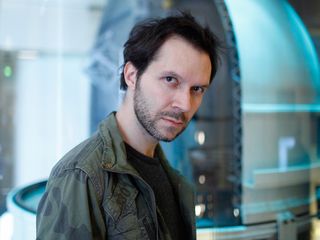
Paul Gilbert talks Vibrato track-by-track
Can you describe the recording process? Also, how did you choose the players?
“As usual, I gave myself a nearly impossible deadline to make the record. My solution was to organize everything – the band, the engineers, the photographer, the album art designer, the mastering – and then write the album as I was recording it. I gave myself a week to write each song, and then I got together with the band every Tuesday to record that song live in my studio.
“We would rehearse it a few times, tweak the arrangement and then go for the ‘real’ takes. Thomas, Kelly and Emi were really fantastic to learn these complex songs so quickly and do some amazing improvising with little or no rehearsal. I did overdub a few guitar solos and most of the vocals, but the majority of the record is live. We even did Enemies (In Jail) live, without a click track!
“This is the first time that I recorded with Thomas Lang. He’s an unbelievable drummer. He does the Rock Drums school at Artistworks, which is the same company where I have my online rock guitar school. I met him through that, and after one quick jam session, I was blown away at how much he listens when he plays.
“If I improvise and start doing any rhythmic theme or accents, he immediately picks up on it and starts supporting me. It really makes me play better, or at least makes me sound like I’m playing better. And Thomas has the rare ability to play a world-class groove, in addition to having his arsenal of face-melting techniques.
“Then there’s Kelly LeMieux, who I’ve toured with before, but this is our first recording together. Kelly plays in the pop/punk band Goldfinger, and he has such good bass tone, energy and instinct. He has tons of technique as well, and it’s just a joy to pull up his bass tracks when mixing. He’s always playing the perfect part with the perfect tone. Those elements are often surprisingly hard to find.
Let’s talk about the enormous contributions of your wife, Emi, who is utterly magnificent. What’s it like collaborating with her?
“Emi has played keyboards here and there on my last few albums, but this is the first time that I’ve really let her loose, and man, she played great. She started playing classical piano when she was three years old, but has been working on jazz, blues and funk for the last few years. She actually improved my ear for those styles a lot because I could listen to her practice.
“Emi always amazes me with her perfect pitch, because she can just play what she hears. I wish I could improvise like that. I’m working on it. Also, she has a really good sense of dynamics and tone. I usually have an idea for the basic keyboard part of a song, but she comes up with variations and really makes it grow.”
What were your main guitars on the album? Any new pieces of gear?
“I used two of my Ibanez Fireman guitars. One is the stock FRM100, the red one. The other is my custom shop Korina prototype Fireman. I also used an Ibanez PGM401 customized with a Wilkinson-Gotoh tremolo, like on the Andy Timmons model, and with Ibanez locking tuners to help the tremolo stay in tune. Plus, I used a vintage Ibanez semi-hollowbody that I bought on e-Bay.
“For pedals, I used an Foxrox Octron quite a bit. Octave pedals work better with a compressor before the input, so I used an Empress Effects compressor. I had an assortment of overdrive pedals – my Majik Box Fuzz Universe, an Ibanez Tube Screamer reissue, an Xotic Effects AC Booster and a Way Huge Green Rhino. I used different pedals depending on the song and my mood.
“At the end of the chain, I used a Lehle P-Split to go into two MXR Phase 90s, with the speed knobs set slightly different from each other. I ran these to two amps for a huge stereo effect.
“The amps were Marshall 2061x and 1987x heads, both running into THD Hot Plates and then into the speakers of two Marshall Vintage Modern 2 x 12 combos.”
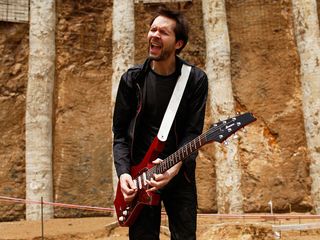
Enemies (In Jail)
“It’s been a long time since I used a whammy bar, and I was excited to try it with an octave pedal and my stereo phase shifters. The first thing I did was just to play the most bonehead whammy lick that there is, just sort of a ‘whoo-whoo-whoo’ with an open harmonic. But it sounded great! I felt like a kid with his first tremolo bar. Soon I had the main riff to the song, and I just started singing a melody over it.
“For the lyrics, I used a quote from a book that I wrote when I was around four years old. I would draw pictures and dictate the text to my mom, who would write the words on the page. One of the things that I wrote was ‘It’s happy when you get to ride in a racing car, and one of your bad, bad, bad, bad, bad enemies is in jail.’ This idea from my four-year-old self really cracked me up. I hadn’t yet learned to be polite or politically correct, and I was demonstrating the part of human nature that finds joy in revenge.
“We’re not supposed to admire or admit that we feel this way, but in this song, I just let it loose. And the joyous, gospel-choir vocal arrangement singing ‘In jail!!’ just cracks me up. Again, I love the contrast.
“Emi got a new Korg SV-1 keyboard, and the vintage tones are just awesome in that thing. That sound works so well with the chords. I’ve learned so much about blues chords in the last few years, and it paid off when I wrote this part. Of course, her solo at the end is all hers, and it’s just ridiculous. Thomas did an amazing job of following her accents.
“For guitars, that’s my Ibanez PGM401 modified with the whammy bar. There were no overdubs in the song – it’s all a single-guitar performance. The Octron and the Phase 90s make it sound huge.”

Rain and Thunder and Lightning
“I wrote it all on guitar, although Emi helped me with the chord changes for the solo in the middle. When I did the demo, I played the keyboard parts on guitar, and then Emi took them and made them fit the instrument. This song is an example of me having fun writing. Somehow, the idea that the process has to be fun allowed me to be more creative when arriving at each new part in the song.
“I’m really proud of the chords at the very end, although I’m not even sure what they’re called. But I had been messing around with similar voicings from Night In Tunisia, and they allowed me to hear what I wanted and to find it.
“The songs are all improvised. I think I’ll actually play these solos a lot better when I get these songs on the road, but the ones on the album still get the idea across.
“For just about every song on the record, it would take us 10 passes just to get it assembled and clear in our heads. By take 13, we’d start getting some really good takes. By take 17 or 18, we’d have reached our peak, and then we’d play it a few more times just to see if anything surprising might happen.
“Then we’d listen back and pick our favorite sections. Jun Murakawa, our engineer, would put them together. My solos on this song were all recorded live with the drums, but I did go through and pick my favorite parts from different takes.”

Vibrato
“There’s actually a thick, five-part guitar harmony going on underneath the vocal, but it blends so well that it became more of a texture than a noticeable part. This song was inspired, in part, by the things that I want my students to learn at my online school. They send in videos, and I watch them and send back clips with advice and new exercises. I started this right in the middle of doing the album, so suddenly I was listening to a lot of guitar questions and a lot of people playing.
“Some of the elements that I try to encourage when I teach are playing with syncopation, playing with a shuffle groove, starting on beats other than ‘one' and, of course, developing killer vibrato and bending.
“I thought I should practice what I preach, so this song is a combination of those elements and an example of the things that are sometimes missing from typical ‘shred’ guitar. I didn’t want them to be missing, so I filled the song, and this album, with them.
“This is one of my favorite solos that I’ve ever played. I actually composed most of it by playing an electric kazoo into a overdriven Marshall amp, recording it and then figuring out how to do it on the guitar.
“Since it was an overdub, I was using my Randall isolation cabinet, and I just threw a mic in there, so some of the ‘squawk’ might be coming from my mic placement – or lack of it. But I just love that thing. It’s so rhythmic and purely from my imagination, via the kazoo, rather than relying on fingering patterns and licks that I’ve played a million times before.”
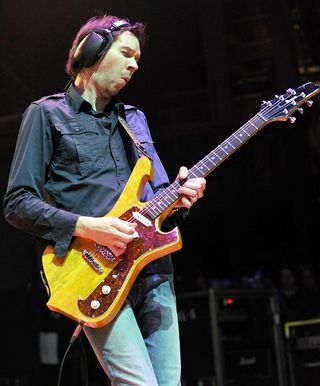
Put It On The Char
“Mostly, I just wanted some good holes and syncopations. There is one small pattern that was influenced by listening to Ronnie Montrose in Gamma – the song Ready For Action. I love Edgar Winter, but any similarities are coincidental.
“The Keith Emerson influence... well, Emi loves Tarkus, but she’s been mostly studying a jazz organist named Tony Monaco. We both listen to him all the time. He’s one of the most exciting and natural improvisers that I’ve heard.
“I think we ate at Fatburger on the day we recorded this song. When you order, you have a choice to have your burger grilled or char-broiled. I chose the latter, and the cook shouted, ‘Put it on the char!’ We were fueled by some good cheeseburgers… and listening to one another.”

Bivalve Blues
“The tricky thing about the soloing in this song is that it’s a minor blues. I’ve been working on blues progressions with dominant chords, but for some reason when I felt in the mood to write a blues, I used minor chords instead. I just tried to play what I heard in my head, to have the guitar answer the vocal and to follow the chord changes.
“I had locked myself in my studio a little too long, and I hit a writing block. As every hour passed, my fun turned into frustration and darkness, and I finally realized that I had the blues. So I wrote one. The lyrics are about being a clam at the bottom of the ocean, far away from the sunlight, and that’s how I was feeling in the studio. I actually wrote all the lyrics on the morning of the session. I just woke up and wrote them in about five minutes. I don’t know if they’re the best lyrics, but they’re true.
“This kind of song makes me glad that I play the electric guitar – there were so many opportunities to bend the strings. It makes having the blues feel good.”

Blue Rondo A La Turk
“This is a classic song by Dave Brubeck. Emi and I had been playing it a lot on my clinic tours, so we decided to try it in the studio. I know that she would have preferred to use a real acoustic piano, but I don’t have room for one at my studio, and we wanted to perform live with the band, so she used a Yamaha S90ES. It still sounds good, and it has a lot of attack. I played the harmony lines that were played by the saxophone on the original version. It’s pretty intense with the odd time feel.
“It’s in F, which is a nightmare of a key for a rock guitarist, but I’m getting used to it. Also, the changes are a bit more complex than a standard I-IV-V blues. It’s got a VI chord and a ii chord in it, as well. In jazz, these are common, but for a rock guy like me, it was quite challenging to navigate this unfamiliar territory. I did my best.”

Atmosphere on the Moon
“I was watching a YouTube video of Todd Rundgren and Daryl Hall playing an old Delfonics song called Didn’t I. I love all the modulations and slash chords in Philadelphia soul music, so I decided to write my own song with that kind of feel. The lyrics are actually a bit misanthropic, but the music is sincere and soulful, and somehow that expresses my sense of humor and cynicism about human weakness and my optimism about human potential – along with my love of big gospel harmonies – all at once.
“The rhythm guitar and the solo in the intro were recorded live with the band. I used the Empress Compressor to give me sustain and a sensitive response, while still keeping a relatively clean tone. Also, I used a vintage Ibanez semi-hollowbody, and it responded really well to being near a loud amp. I got even more sustain that way.
“The solo the in the middle was my Ibanez Korina Fireman prototype. I overdubbed that solo because it’s in Bb major and has some tricky chord changes. I didn’t want to make the band endure all my mistakes while I tried to play the right notes, so practiced it on my own after the session and did it as an overdub. I’m glad I had some extra time to work on it. It turned out awesome.”

The Pronghorn
“I wrote the main riff when I was making a video answer to a student at my online school. I liked the riff so much that I decided to keep it for my own song, so I wrote another riff for the student to work on. Now that the album is out, he can work on The Pronghorn, too.
“Before I decided to call the album Vibrato, I was thinking about using the title The Pronghorn. The pronghorn antelope is the fastest land mammal in the western hemisphere. It developed its stunning speed from having to escape the now-extinct American cheetah. So the pronghorn lives on because of its ability to run incredibly fast but without the same life-or-death need for it that it once had.
“I thought that could be an interesting analogy with my guitar speed, which was developed in the ‘80s – when competing with Yngwie Malmsteen and Eddie Van Halen, it felt like life-or-death importance. Now I still have lots of speed, but since the ‘80s are long in the past, I can just have fun with it. The cheetah isn’t going to eat me.”

Roundabout (Live)
“I didn’t really 'get’ Steve Howe as a teenager – I craved distortion too much. But now I love him. That old Yes stuff is so awesome. The intro to Roundabout is a part that every guitarist of my generation has played at some point, but the rest of the song is where the cool stuff really starts to happen.
“I always like the challenge of playing keyboard parts on guitar, so I had fun working those out. The quiet breakdown was especially challenging – and, of course, singing and playing at the same time.
“Tony Spinner is a stunning singer and guitarist. I featured his voice in the mix – it’s just stronger than mine for this kind of tune. And I couldn’t resist throwing in some extra vibrato. After all, that’s the album title!”
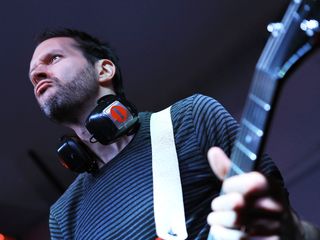
I Want To Be Loved (Live)
“My dad used to listen to this tune all the time when I was a kid, so it got into my head. I love the drum groove and the way that Tony made his guitar sound a bit like a harmonica in the verses. You should check out the original version on Muddy’s Hard Again album. If any metal people don’t understand why blues is so cool, this performance from Muddy could open the door for them. And, of course, I’m happy if they listen to my version, too.
“One of the reasons that I asked Tony to play in my band on that tour was so I could jam blues with him. He is the real thing, and I wanted to experience his phrasing and groove. As for my solo at the end, it was a live show, so I just went crazy!”
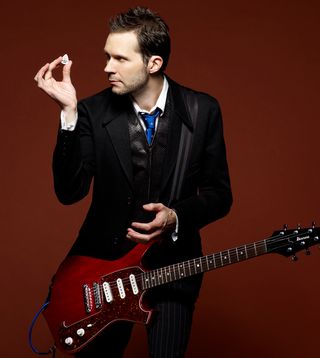
Go Down (Live)
“I sang the first half of the verse an octave down, and then Tony came in and sang the second half for real. I like the contrast and the way it makes the song build. The way that Jeff Bowders and Craig Martini played this groove, too, is so great. It’s so easy to get excited and speed up tempos live, but they held this back and really made it big and heavy.
“It’s a shuffle. I’ve been into those lately. Actually, I’ve always liked shuffles. The heavy metal bands of my generation used to do lots of them: American Girls by Triumph, And The Bands Played On by Saxon, Children Of The Grave by Black Sabbath and, of course, all the Van Halen shuffles, like I’m the One, The Full Bug and Bottoms Up. When I listen to AC/DC playing Go Down, it makes me think, This is the best song in the world.
“Angus Young is so awesome. If I could jam with any guitar players right now, I’d pick Angus and BB King. That would be such a blast to listen to what those guys have to say on their guitars. I’d love to be a part of that conversation.”

Joe is a freelance journalist who has, over the past few decades, interviewed hundreds of guitarists for Guitar World, Guitar Player, MusicRadar and Classic Rock. He is also a former editor of Guitar World, contributing writer for Guitar Aficionado and VP of A&R for Island Records. He’s an enthusiastic guitarist, but he’s nowhere near the likes of the people he interviews. Surprisingly, his skills are more suited to the drums. If you need a drummer for your Beatles tribute band, look him up.

"Reggae is more freeform than the blues. But more important, reggae is for everyone": Bob Marley and the Wailers' Catch a Fire, track-by-track
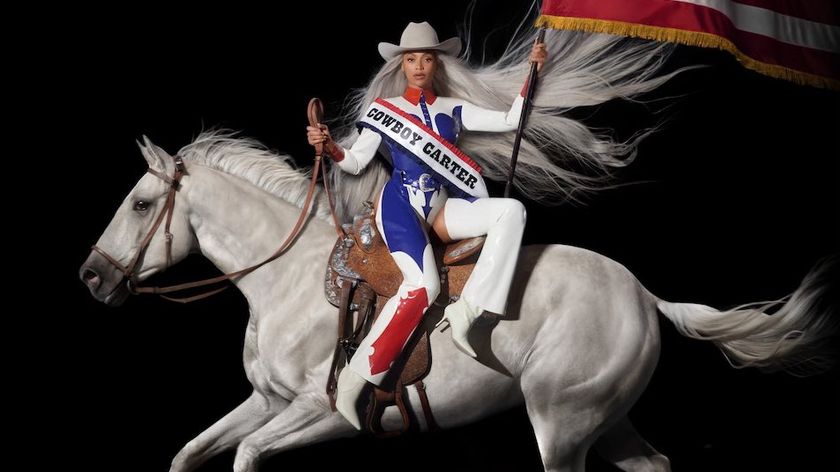
“Part of a beautiful American tradition”: A music theory expert explains the country roots of Beyoncé’s Texas Hold ‘Em, and why it also owes a debt to the blues

"Reggae is more freeform than the blues. But more important, reggae is for everyone": Bob Marley and the Wailers' Catch a Fire, track-by-track

“Part of a beautiful American tradition”: A music theory expert explains the country roots of Beyoncé’s Texas Hold ‘Em, and why it also owes a debt to the blues

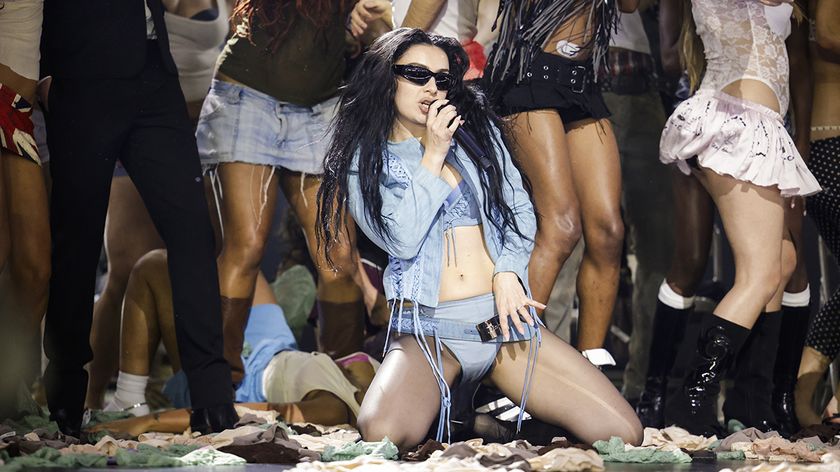
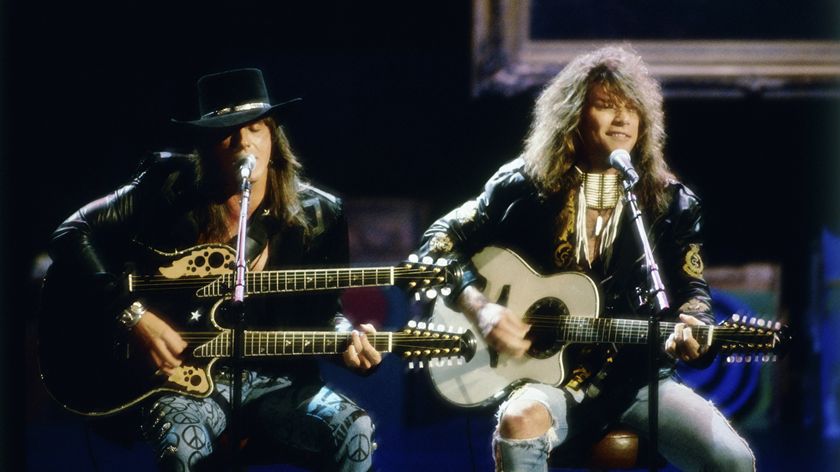
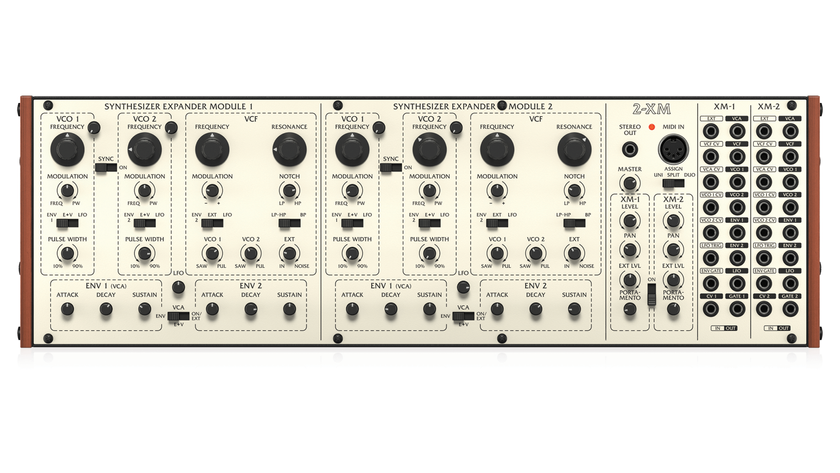
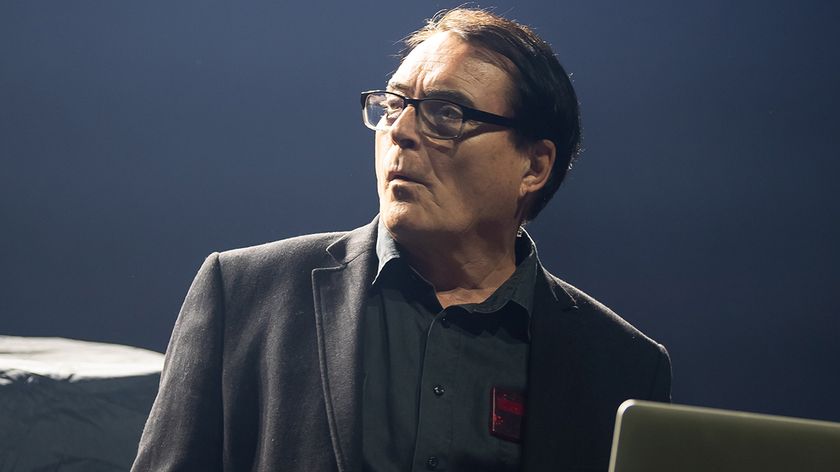
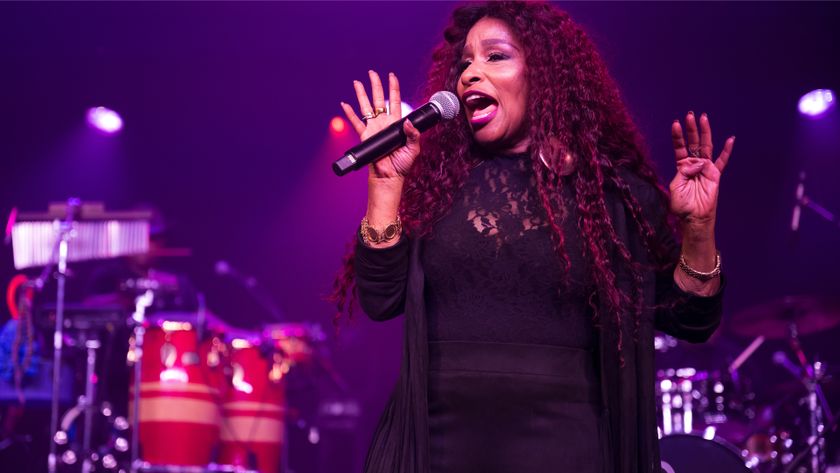
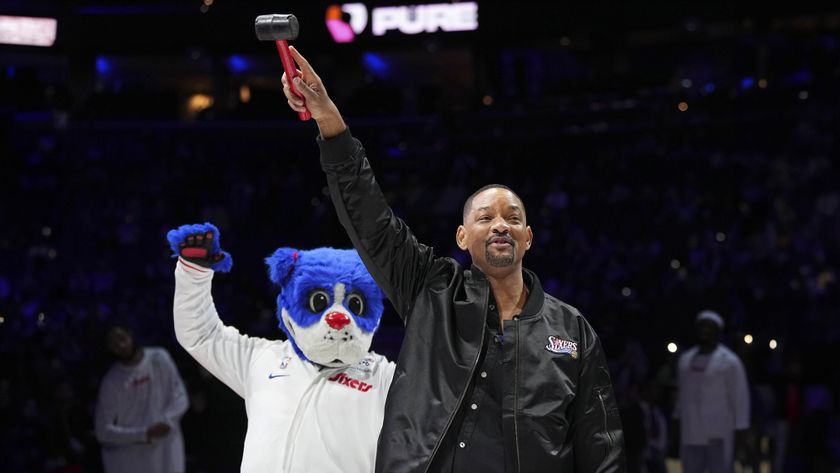


![Chris Hayes [left] wears a purple checked shirt and plays his 1957 Stratocaster in the studio; Michael J. Fox tears it up onstage as Marty McFly in the 1985 blockbuster Back To The Future.](https://cdn.mos.cms.futurecdn.net/nWZUSbFAwA6EqQdruLmXXh-840-80.jpg)